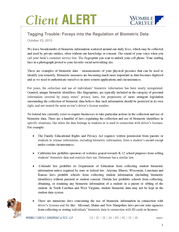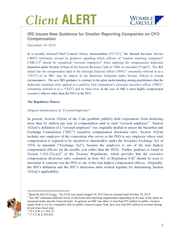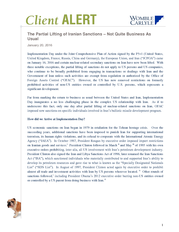Next Steps: Helping Your Organization Implement the New Medicare Overpayment Rule – PART- I - April 18, 2016
Womble Carlyle Sandridge & Rice
Description
Contact Information
If you have any questions concerning this article or the services of WCSR and its affiliate FirmLogic,
please contact Sharon Clayton* RN, MS, MBA, CPC at 336.728.7108 or SClayton@wcsr.com or the
following partners in the Healthcare Practice: Tom Stukes at336.574.8065 or TStukes@wcsr.com, Tracy
Field at 404.962.7539 or TField@wcsr.com, Sandy Miller at 864.255.5425 or SaMiller@wcsr.com,
Tony Brett at 336.721.3620 or ABrett@wcsr.com.
*Sharon Clayton is not licensed to practice law. Her activities are directly supervised by members of the
firm licensed to practice law in the firm’s Winston-Salem office.
__________________
Womble Carlyle client alerts are intended to provide general information about significant legal
developments and should not be construed as legal advice regarding any specific facts and
circumstances, nor should they be construed as advertisements for legal services.
IRS CIRCULAR 230 NOTICE: To ensure compliance with requirements imposed by the IRS, we inform
you that any U.S. tax advice contained in this communication (or in any attachment) is not intended or
written to be used, and cannot be used, for the purpose of (i) avoiding penalties under the Internal
Revenue Code or (ii) promoting, marketing or recommending to another party any transaction or matter
addressed in this communication (or in any attachment).
4
.
Regulations Presentations
+
Regulations Sub Categories














